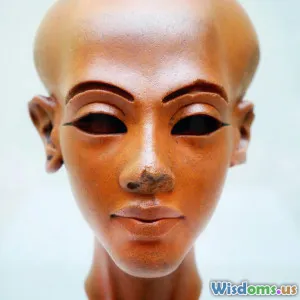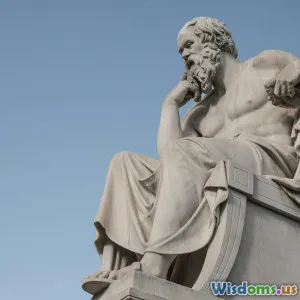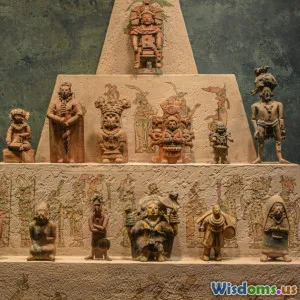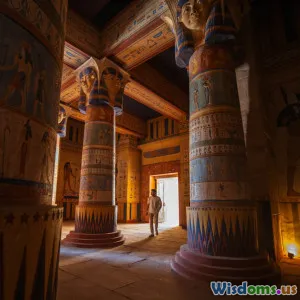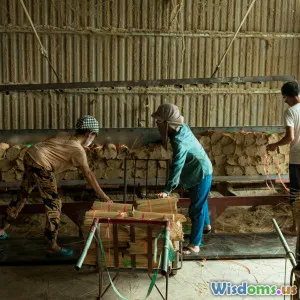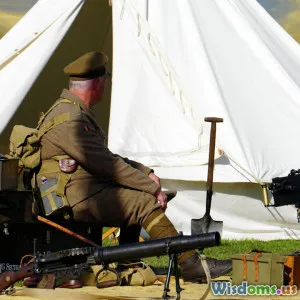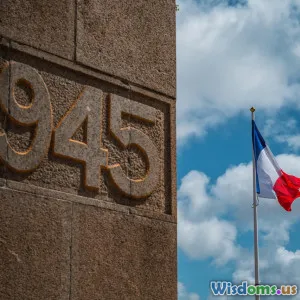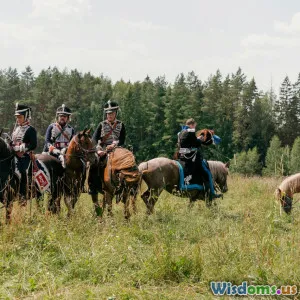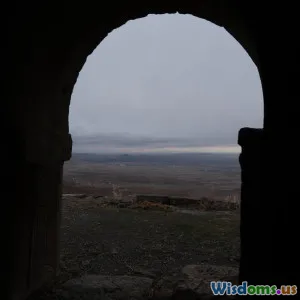
Archaeological Discoveries That Changed History
9 min read Explore groundbreaking archaeological discoveries that reshaped our understanding of ancient civilizations and mysteries. (0 Reviews)
Archaeological Discoveries That Changed History: Unlocking Ancient Civilizations & Mysteries
History is often rewritten with each new artifact unearthed, and archaeology is the key to unlocking stories long forgotten. From deciphering lost languages to unraveling the origins of civilization itself, certain discoveries have fundamentally changed how we perceive our past, challenging preconceived notions and sometimes rewriting entire chapters of human history.
In this article, we will journey through some of the most transformative archaeological discoveries that have reshaped our understanding of ancient civilizations and mysteries. These breakthroughs remind us that history is a living narrative, continually amended by the secrets buried beneath our feet.
The Rosetta Stone: Deciphering the Language of Egypt
One of the most iconic archaeological finds, the Rosetta Stone, discovered in 1799 near the town of Rosetta (Rashid) in Egypt, transformed archaeology and linguistics entirely. This granodiorite stele features the same text inscribed in three scripts: Greek, Demotic, and Egyptian hieroglyphs.
Why was it so monumental? Hieroglyphics had baffled scholars for centuries. The Rosetta Stone provided the crucial key to decipher the ancient Egyptian writing system because it offered a side-by-side comparison of the scripts, with the Greek text serving as the linguistic Rosetta Stone.
Jean-François Champollion’s breakthrough in 1822 using the Stone enabled historians to finally read centuries-old texts, unlocking vast knowledge about ancient Egyptian culture, governance, religion, and daily life. Without this discovery, our understanding of one of history’s most fascinating civilizations would remain incomplete.
Insight: As historian Dorothea Arnold succinctly put it, "The Rosetta Stone opened a door to thousands of years of Egyptian history that was previously sealed forever."
The Terracotta Army: China’s Eternal Guardians
In 1974, farmers near Xi’an in China inadvertently discovered thousands of life-sized terracotta soldiers buried near the tomb of Emperor Qin Shi Huang, the first Emperor of unified China. This army was meant to protect the emperor in the afterlife and is considered one of the greatest archaeological treasures of the 20th century.
With over 8,000 soldiers, 670 horses, and 130 chariots, each figure is uniquely detailed, showcasing artisanship and insights into military organization, armor technologies, and artistic capabilities of the Qin Dynasty circa 210 BCE.
This discovery revolutionized perceptions of ancient Chinese statecraft, military power, and funerary practices, revealing the scale of imperial ambitions.
Scientific analysis also exposed details about ancient manufacturing techniques and paint use, demonstrating a sophisticated understanding of materials.
The Terracotta Army gave the world an unprecedented glimpse into imperial China, a civilization that was pivotal in shaping East Asian history.
Göbekli Tepe: Rethinking the Dawn of Civilization
In southeastern Turkey, archaeologists uncovered Göbekli Tepe, which dates back to approximately 9600 BCE, making it the oldest known monumental religious site. This discovery challenges long-held beliefs that complex society and monumental architecture arose only after agriculture developed.
Göbekli Tepe features massive T-shaped stone pillars arranged in circular formations, intricately carved with animal motifs. The site suggests that hunter-gatherer communities organized large-scale construction, defying assumptions about social structures preceding farming.
This revelation triggered a paradigm shift—human civilization might not have progressed in a linear way from farming to statehood, but rituals and community gatherings like those at Göbekli Tepe could have catalyzed social complexity.
As Klaus Schmidt, the lead archaeologist, noted:
"Göbekli Tepe is the world’s first temple; it demonstrates sophisticated religious beliefs emerged before agriculture and urbanization."
The Dead Sea Scrolls: Illuminating Ancient Texts and Beliefs
Discovered between 1946 and 1956 in eleven caves near the Dead Sea, these ancient Jewish texts date from the third century BCE to the first century CE. Over 900 manuscripts were found, including biblical documents, sectarian writings, and early Jewish literature.
The scrolls have had profound effects on biblical scholarship and understanding of Jewish society during the Second Temple period.
They provided context for early Christianity’s development, showing altered or variant textual traditions. Moreover, the scrolls revealed insights about religious diversity, community organization, and theology that had long been speculative.
Importantly, the scrolls cemented the Dead Sea region as an epicenter of religious and cultural ferment pivotal to Western civilization.
Machu Picchu: The Lost City and Incan Ingenuity
Discovered by Hiram Bingham in 1911, Machu Picchu sat largely unknown to the outside world, perched high in the Andes Mountains of Peru. This Incan citadel exemplifies remarkable engineering, terrace farming, and sophisticated urban planning without the use of modern construction tools.
Machu Picchu offers unparalleled insight into the social, religious, and agricultural life of the Inca Empire before Spanish conquest.
The site’s preservation underscores the Inca’s adaptation to formidable geography and climate, showcasing their environmental mastery and cosmological designs aligned with solstice phenomena.
Beyond artistry and infrastructure, Machu Picchu's rediscovery revitalized global interest in indigenous pre-Columbian civilizations of the Americas.
Conclusion: Archaeology as a Living Dialogue with the Past
Each of these discoveries illustrates how archaeology does more than unearth artifacts; it re-creates human narratives lost to time. By revealing ancient scripts, monumental art, extraordinary burials, and cityscapes, archaeology challenges assumptions and opens diverse windows into human experience.
Whether it’s the Rosetta Stone cracking codes, Göbekli Tepe redefining civilization's origins, or the Terracotta Army portraying imperial power on an epic scale, these finds inspire curiosity and scholarly debate alike.
As technology advances—from satellite imaging to DNA analysis—the capacity for new “history-changing” discoveries only grows. Hence, remaining attentive and valuing archaeological work is critical, for each dig may very well shift our understanding of humanity’s vast and intricate story.
Your Action: Consider visiting museums celebrating such finds, supporting archaeological preservation efforts, or simply reading about how past discoveries illuminate today's world. History isn't just the past; it's a dynamic conversation—one waiting for you to explore.
Sources & Further Reading:
- Rice, Michael (2009). Who Was Who in Ancient Egypt. Routledge.
- Wilkinson, Toby A.H. (2010). The Rise and Fall of Ancient Egypt. Random House.
- Schmidt, Klaus (2011). "Göbekli Tepe – The World’s First Temple?" Culture & History Digital Journal.
- Joyce, Rosemary A. (2004). The Oxford Encyclopedia of Archaeology in the Near East. Oxford University Press.
- National Geographic, "Secrets of the Terracotta Army" (2014).
- Schiffman, Lawrence H., & VanderKam, James C. (1995). The Dead Sea Scrolls Today. Eerdmans.
- Hyslop, John (1984). Inca Archaeology. Cambridge University Press.
Rate the Post
User Reviews
Popular Posts










